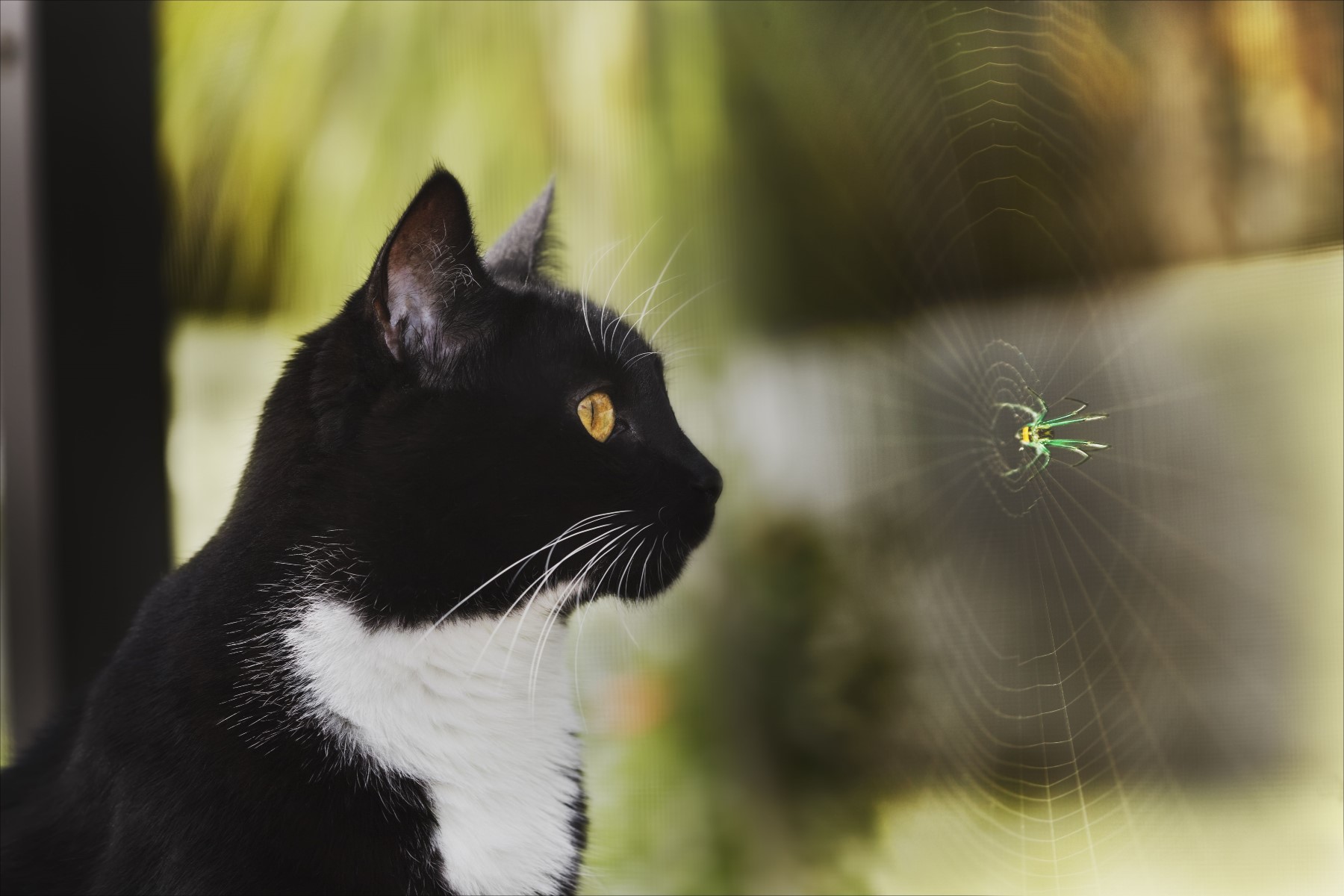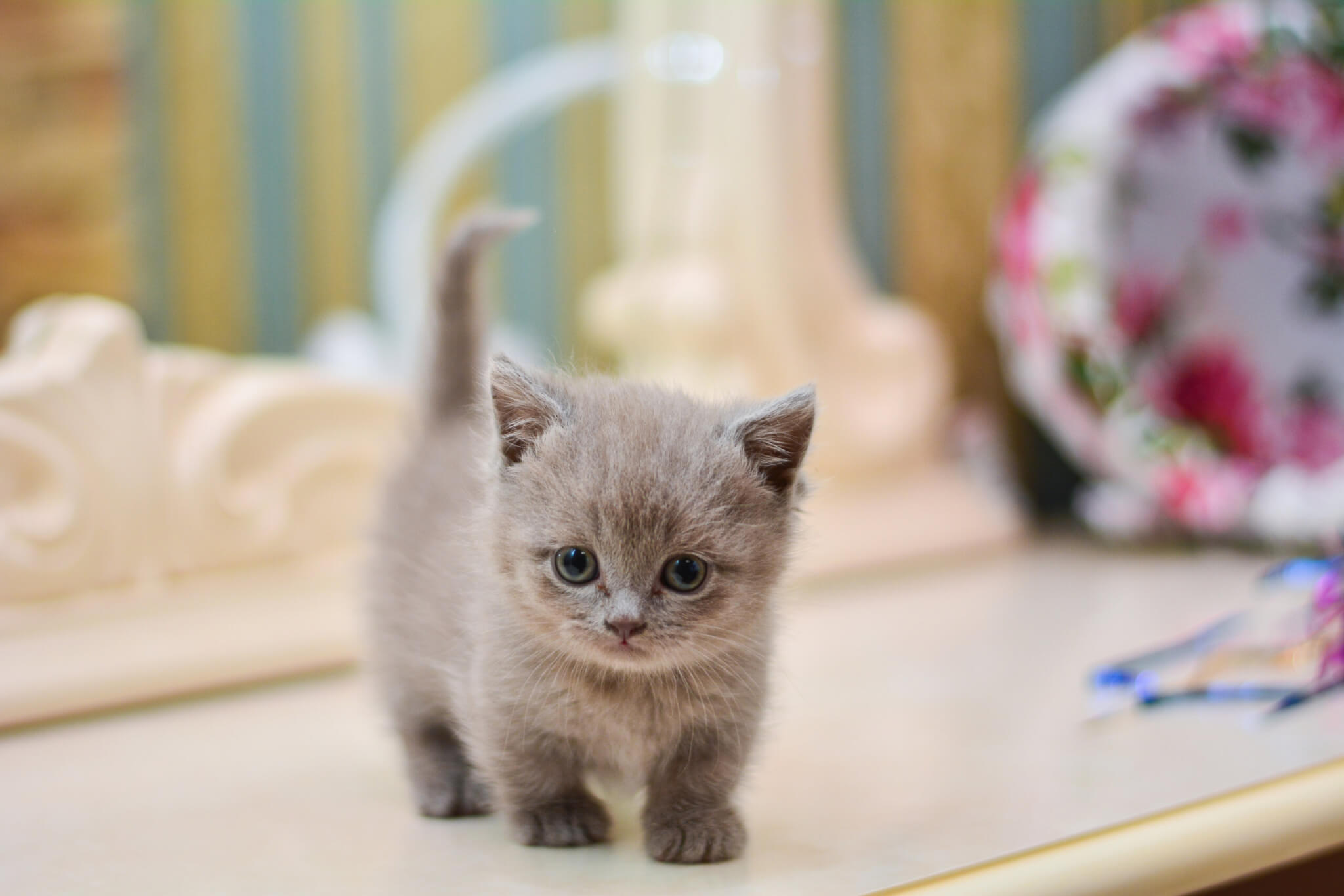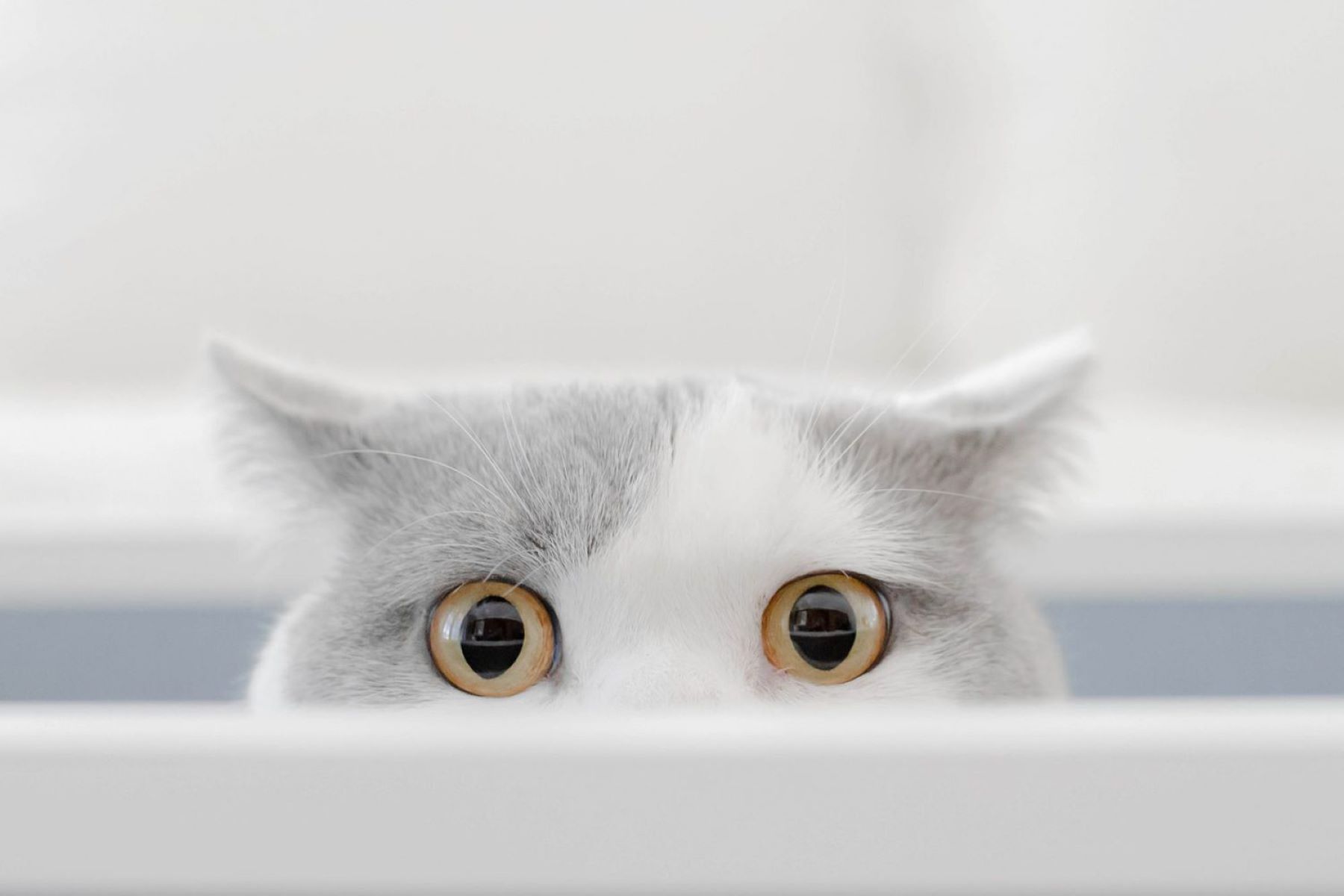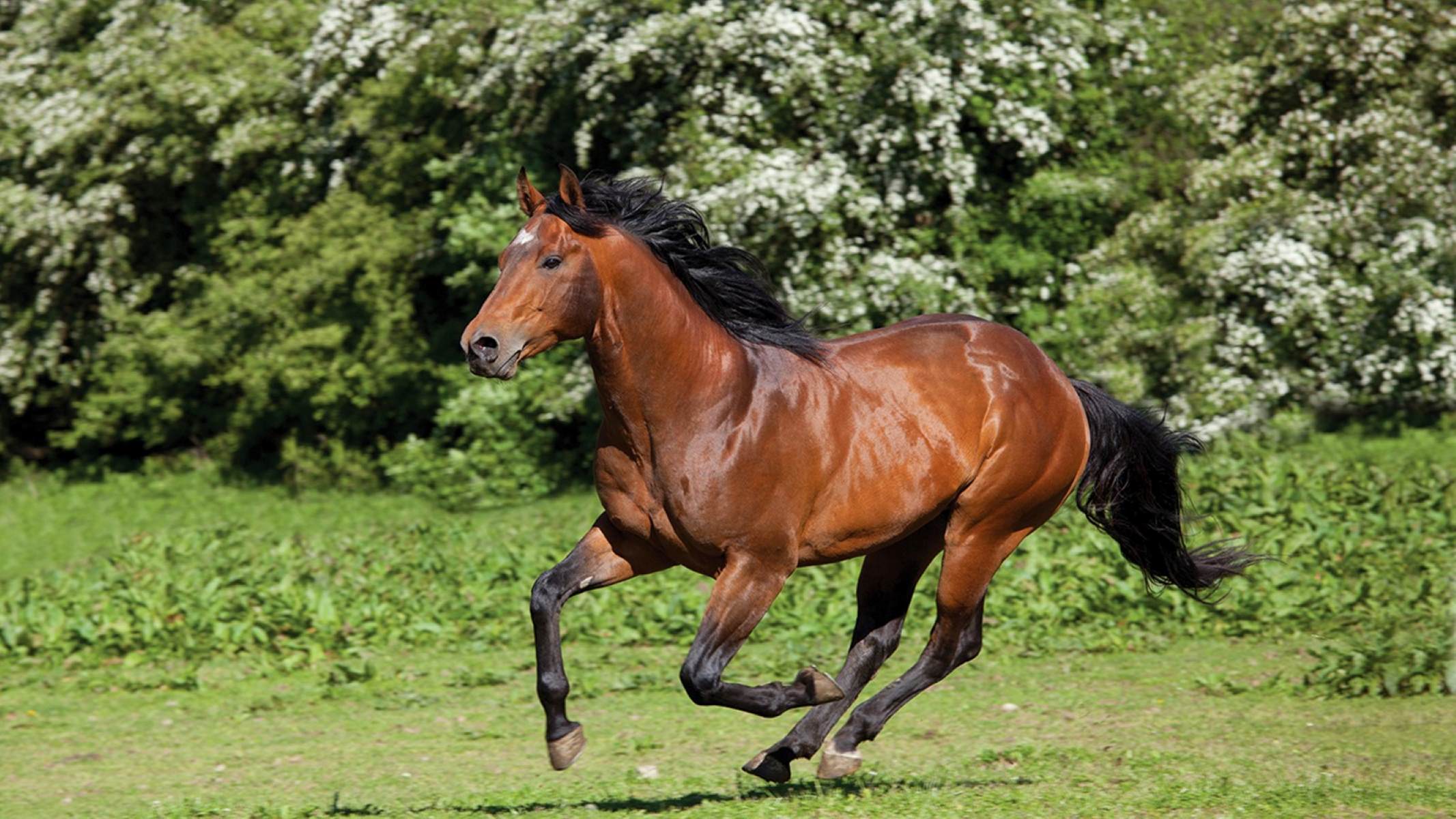Home>Pets & Animals>The Surprising Reason Why Cats Love Lying On Their Backs With Legs In The Air
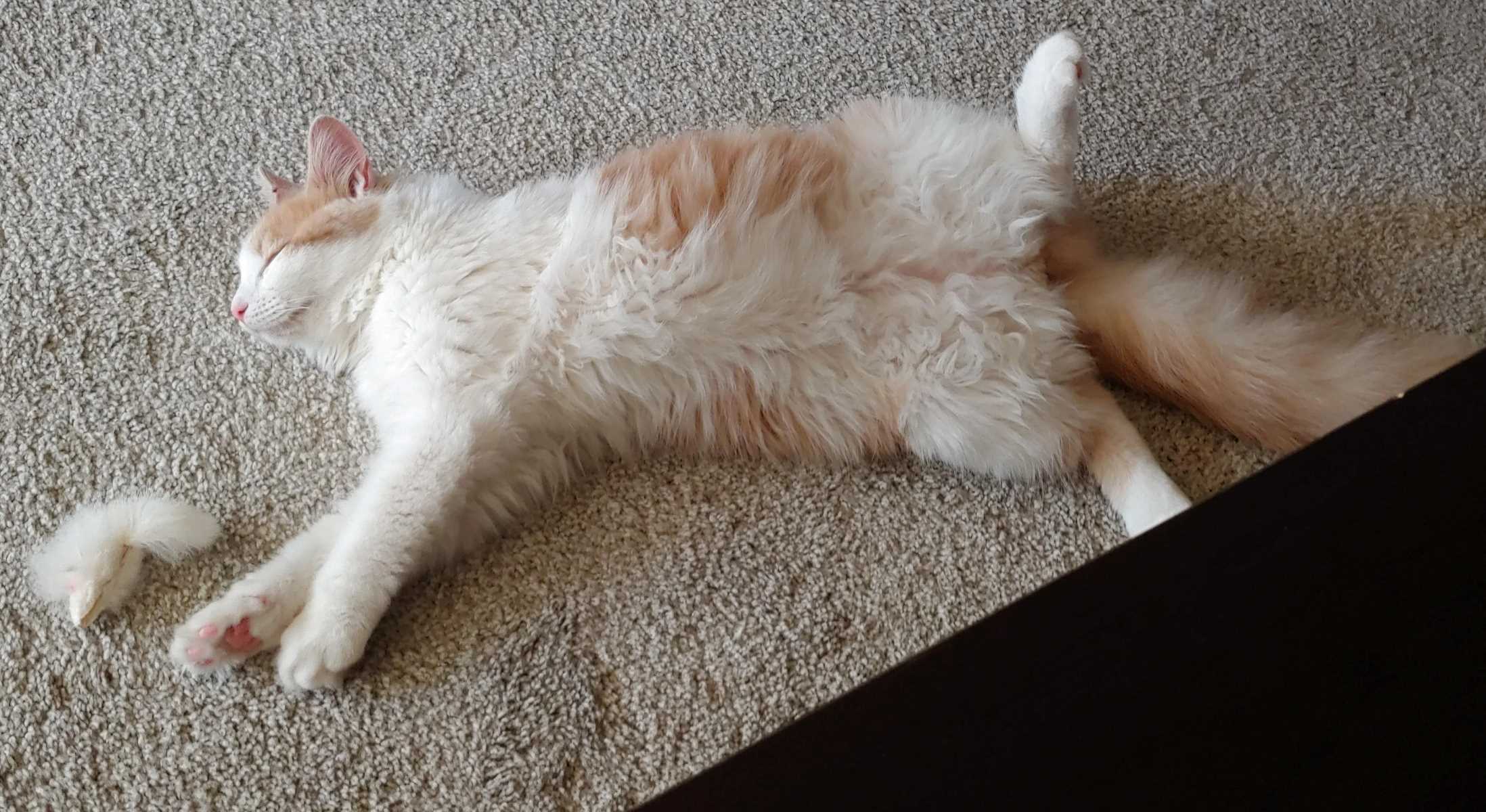

Pets & Animals
The Surprising Reason Why Cats Love Lying On Their Backs With Legs In The Air
Published: January 17, 2024
Discover the fascinating reason behind why cats love lounging on their backs with their legs in the air. Learn more about this adorable behavior and other intriguing pet and animal facts.
(Many of the links in this article redirect to a specific reviewed product. Your purchase of these products through affiliate links helps to generate commission for Regretless.com, at no extra cost. Learn more)
Table of Contents
Introduction
Cats are known for their enigmatic behaviors, often leaving us in awe of their peculiar antics. One such behavior that never fails to capture our attention is when cats sprawl out on their backs with their legs in the air, looking utterly relaxed and carefree. It's a sight that can instantly bring a smile to our faces and evoke a sense of curiosity about what motivates this adorable posture.
This seemingly carefree and vulnerable position may appear surprising to many cat owners, especially when considering the cautious and reserved nature of these graceful felines. However, there are fascinating reasons behind this behavior that shed light on the intricate world of feline instincts and emotions. Understanding the reasons behind this peculiar posture can deepen our connection with our feline companions and provide insight into their unique behaviors. Let's delve into the fascinating world of cats and explore the surprising reasons why they love lying on their backs with their legs in the air.
The Anatomy of a Cat's Back
Understanding the anatomy of a cat's back is crucial in unraveling the mystery behind their penchant for lying on their backs with legs in the air. Cats possess a remarkably flexible spine, comprising 30 individual vertebrae, compared to the 33-34 found in humans. This exceptional flexibility allows cats to execute a wide range of movements, from graceful leaps to agile twists and turns.
The feline spine is designed to support their athletic prowess, enabling them to swiftly navigate their environment with precision and grace. The vertebral column is divided into five regions, each serving distinct functions. The cervical and thoracic regions, located in the upper portion of the spine, contribute to the cat's remarkable agility and flexibility.
Furthermore, cats boast powerful abdominal muscles that provide crucial support for their spine. These muscles play a pivotal role in stabilizing the spine and facilitating the execution of various movements. The lumbar region, positioned in the lower back, is particularly significant in enabling cats to maintain balance and execute swift, coordinated movements.
Additionally, the feline spine is adorned with a series of supple intervertebral discs, which act as shock absorbers, cushioning the impact of movements and providing flexibility. This unique anatomical feature allows cats to engage in acrobatic feats and agile maneuvers, showcasing their unparalleled athleticism.
Moreover, the unique construction of a cat's back contributes to their ability to assume the iconic posture of lying on their backs with legs in the air. The flexibility of their spine, coupled with the robust support provided by their abdominal muscles, allows cats to effortlessly adopt this seemingly carefree and relaxed position. This behavior offers a glimpse into the remarkable adaptability and physical prowess of these captivating creatures.
By delving into the intricate anatomy of a cat's back, we gain valuable insights into the physical capabilities that enable them to exhibit such endearing and surprising behaviors. This understanding sets the stage for exploring the deeper motivations behind their unique postures and sheds light on the captivating world of our feline companions.
Instinctual Behavior
Cats are inherently driven by primal instincts that have been honed through centuries of evolution. These instincts play a pivotal role in shaping their behaviors and preferences, including their penchant for lying on their backs with legs in the air. This seemingly carefree posture is deeply rooted in their instinctual behaviors, reflecting their innate predispositions and survival strategies.
One of the primary instincts that influence a cat's behavior is their innate need for self-preservation. In the wild, cats are both predators and prey, constantly navigating a world filled with potential threats. To adapt and thrive in such an environment, cats have developed a repertoire of instinctual behaviors aimed at ensuring their safety and survival. When a cat lies on its back with legs in the air, it is showcasing a behavior that serves as a survival tactic in the wild.
In the wild, this posture allows cats to camouflage themselves and remain inconspicuous, blending into their surroundings to evade potential predators or rivals. By exposing their vulnerable underbelly, cats can appear non-threatening and unassuming, thereby reducing the likelihood of confrontation or aggression from other animals. This instinctual behavior is deeply ingrained in their genetic makeup, reflecting their adaptive strategies for navigating the complexities of their natural habitat.
Furthermore, the posture of lying on their backs with legs in the air also serves as a means of stretching and flexing their muscles, promoting agility and suppleness. This instinctual behavior is reminiscent of the stretching and grooming rituals observed in wild felines, which serve to maintain their physical condition and readiness for swift, coordinated movements.
Additionally, this posture can also be interpreted as a display of trust and contentment. In a safe and secure environment, cats may exhibit this behavior as a sign of relaxation and comfort, reflecting their confidence in their surroundings and their human companions. This instinctual behavior underscores the deep-rooted need for security and trust in their interactions, further strengthening the bond between cats and their human caregivers.
The instinctual behaviors that drive cats to assume the posture of lying on their backs with legs in the air offer a captivating glimpse into the intricate world of feline instincts and survival strategies. By unraveling the evolutionary underpinnings of this behavior, we gain a deeper appreciation for the resilience and adaptability of these remarkable creatures, enriching our understanding of their captivating behaviors.
Trust and Vulnerability
When a cat sprawls out on its back with legs in the air, it unveils a vulnerable and trusting side that is deeply intertwined with its emotional state and the dynamics of its environment. This seemingly carefree posture, characterized by the exposure of the cat's soft underbelly, serves as a poignant display of trust and vulnerability, shedding light on the intricate interplay between feline emotions and their interactions with their human companions.
In the realm of feline behavior, the act of exposing the belly is a significant gesture that transcends mere physical posture. It symbolizes a profound level of trust and comfort that a cat experiences in its immediate surroundings. When a cat assumes this posture, it communicates a sense of security and contentment, signifying that it feels safe and at ease in its environment. This display of vulnerability reflects the depth of the bond between the cat and its human caregivers, highlighting the trust that has been nurtured through positive interactions and a nurturing environment.
Moreover, the act of lying on their backs with legs in the air also underscores the emotional vulnerability that cats can exhibit in their interactions with humans. It is a manifestation of their trust in their human companions, as they allow themselves to assume a position that leaves them physically exposed and susceptible. This vulnerability is a poignant reminder of the emotional connection that cats forge with their caregivers, showcasing their willingness to embrace a state of openness and trust in their interactions.
Furthermore, this display of vulnerability is intertwined with the concept of emotional reciprocity in the feline-human relationship. When a cat exhibits this behavior, it invites a response from its human companions, fostering a deeper sense of trust and connection. By acknowledging and respecting the cat's vulnerability, humans can strengthen the bond of trust and create an environment where the cat feels secure and valued.
In essence, the posture of lying on their backs with legs in the air serves as a powerful testament to the trust and vulnerability that cats can exhibit in their interactions with humans. It unveils a tender and authentic aspect of their emotional world, emphasizing the significance of trust, comfort, and mutual respect in nurturing a harmonious and enriching relationship between cats and their human companions.
Comfort and Relaxation
When a cat luxuriously sprawls out on its back with legs in the air, it exudes an aura of unparalleled comfort and relaxation. This iconic posture is a visual symphony of tranquility, capturing the essence of feline contentment and serenity. The act of assuming this seemingly carefree position is a testament to the profound comfort that cats derive from their immediate surroundings, reflecting their innate ability to embrace a state of profound relaxation and ease.
The posture of lying on their backs with legs in the air offers a captivating glimpse into the feline world of comfort and relaxation. It signifies a moment of unbridled repose, where a cat can fully unwind and bask in the soothing embrace of tranquility. This behavior showcases the remarkable capacity of cats to find solace and relaxation in their environment, fostering a sense of emotional well-being and contentment.
Moreover, the posture of lying on their backs with legs in the air also serves as a poignant display of physical comfort. Cats meticulously position themselves to achieve a state of optimal relaxation, allowing them to stretch out and release any tension accumulated during their daily activities. This posture enables cats to fully extend their limbs and revel in a state of physical ease, highlighting their innate ability to prioritize comfort and relaxation in their daily routines.
Furthermore, the act of assuming this posture also reflects the role of environmental factors in fostering a sense of comfort and relaxation for cats. When a cat feels secure and at ease in its surroundings, it is more likely to exhibit behaviors that signify relaxation and contentment. The posture of lying on their backs with legs in the air is a poignant manifestation of the harmonious relationship between cats and their environment, underscoring the profound impact of a nurturing and tranquil setting on their well-being.
In essence, the posture of lying on their backs with legs in the air serves as a captivating testament to the unparalleled comfort and relaxation that cats can experience. It unveils a serene and tranquil aspect of their emotional world, emphasizing their innate ability to find solace and contentment in their immediate surroundings. This behavior offers a poignant reminder of the importance of creating a nurturing and soothing environment that fosters the well-being and emotional fulfillment of our beloved feline companions.
Conclusion
In conclusion, the endearing behavior of cats lying on their backs with legs in the air unveils a multifaceted tapestry of instinctual, emotional, and physical dynamics that enrich our understanding of these captivating creatures. Through a deeper exploration of the anatomy of a cat's back, we gain valuable insights into the remarkable physical capabilities that enable them to assume this seemingly carefree posture. The flexibility of their spine, coupled with the robust support provided by their abdominal muscles, underscores the adaptability and agility that define their unique behaviors.
Furthermore, the instinctual behaviors rooted in the feline genetic makeup shed light on the evolutionary underpinnings of this posture, revealing its significance as a survival tactic and a means of promoting agility and suppleness. The act of lying on their backs with legs in the air serves as a poignant display of trust, vulnerability, and emotional reciprocity, highlighting the profound bond between cats and their human companions. It symbolizes a profound level of trust and comfort that cats experience in their immediate surroundings, fostering a deeper sense of connection and mutual respect.
Moreover, the posture of lying on their backs with legs in the air offers a captivating glimpse into the feline world of comfort and relaxation, emphasizing their remarkable capacity to find solace and tranquility in their environment. It underscores the profound impact of a nurturing and tranquil setting on their well-being, highlighting the importance of creating an environment that fosters the emotional fulfillment of our beloved feline companions.
In essence, the surprising reasons behind cats' love for lying on their backs with legs in the air provide a window into the intricate world of feline instincts, emotions, and physical prowess. By unraveling the complexities of this behavior, we deepen our appreciation for the resilience, adaptability, and emotional depth of these remarkable creatures, fostering a deeper connection and understanding between cats and their human caregivers.


